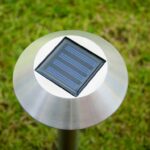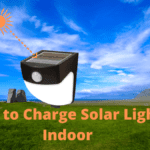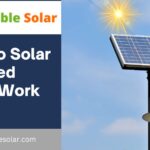How to Turn Solar Lights on: Illuminate Your Outdoor Spaces
To turn solar lights on, locate the power button or switch and press or slide it to the “on” position. In today’s environmentally conscious world, many people are opting for solar lights as a sustainable and cost-effective lighting solution.
These lights harness the power of the sun to illuminate outdoor spaces, making them ideal for pathways, gardens, and patio areas. With no need for wiring or electricity, they are easy to install and maintain. However, if you’re new to using solar lights, you may be wondering how to turn them on.
Fortunately, the process is simple, and we’ll guide you through the steps to get your solar lights up and running.
Understanding Solar Lights
Solar lights are a popular and eco-friendly way to illuminate outdoor spaces. Harnessing the power of the sun, these lights offer a cost-effective and energy-efficient alternative to traditional lighting solutions. In this section, we will delve into the basics of lights, how they work, and the advantages of using them.
Basics Of Solar Lights
Solar lights, as the name suggests, rely on the energy from the sun to produce light. They consist of four key components:
- Solar panel: This panel is typically located on the top of the light and is responsible for capturing sunlight.
- Battery: The solar panel converts sunlight into electrical energy, which is stored in a rechargeable battery.
- LED (Light Emitting Diode) bulbs: These bulbs use the stored energy to emit bright light when triggered.
- Controller: The controller regulates the flow of energy between the solar panel, battery, and LED bulbs to ensure optimal performance.
How Solar Lights Work
The process by which solar lights work is relatively straightforward. During the day, the solar panel absorbs sunlight and converts it into electrical energy. This energy is then stored in the battery for use during the night. When darkness falls, the controller activates the LED bulbs, which emit the stored energy as light. This cycle repeats daily, providing illumination without the need for an external power supply.
Advantages Of Using Solar Lights
Solar lights offer several significant advantages that make them a popular choice for outdoor lighting:
- Energy savings: Rely on renewable energy from the sun, reducing dependence on traditional electricity sources and lowering energy costs.
- Environmentally friendly: By harnessing solar power, these reduce carbon emissions and contribute to creating a cleaner and greener environment.
- Easy installation: Solar lights are typically wireless and easy to install, allowing for hassle-free setup in various outdoor areas.
- No electricity bills: use the sun’s energy, and you can enjoy outdoor lighting without worrying about expensive electricity bills.
- Low maintenance: Once installed, they require minimal maintenance as they are designed to be weather-resistant and self-sufficient.
Understanding the basics, how they work, and their advantages provides valuable insights into why these lights are becoming increasingly popular. Their eco-friendliness, cost-effectiveness, and hassle-free maintenance make them an ideal choice for anyone looking to illuminate their outdoor spaces.
Choosing The Right Solar Lights
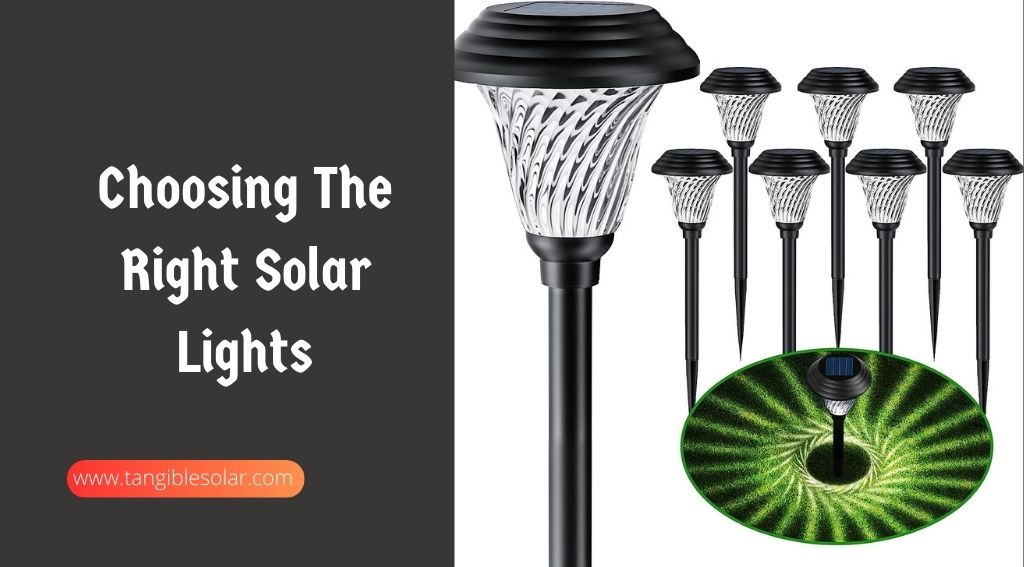
Solar lights are an excellent addition to any outdoor space, providing both practical lighting and an eco-friendly alternative to traditional lighting options. However, with so many options available on the market, it can be overwhelming to choose the right one for your needs. This guide will help you navigate through the factors to consider before buying, the different types available, and the best placement for optimal performance.
Factors To Consider Before Buying Solar Lights
Before purchasing, it’s important to keep in mind a few essential factors. By considering these factors, you can ensure that the ones you choose are suitable for your specific requirements.
- Lighting Needs: Determine the purpose of your. Are they primarily for decorative purposes or to provide functional lighting for pathways, driveways, or garden areas? Understanding your lighting needs will help you select the appropriate brightness and type.
- Sun Exposure: Rely on sunlight for power. Assess the amount of direct sunlight your outdoor space receives throughout the day. If your area is shaded or receives limited sunlight, you may need to consider larger solar panels or opt for a different lighting option.
- Battery Capacity: The battery capacity determines how long it will operate after a full charge. Consider the battery capacity based on your lighting requirements. If you need lights to stay on for longer periods, choose models with higher battery capacities.
- Weather Resistance: Since they are meant for outdoor use, it’s crucial to choose one that can withstand various weather conditions. Look for lights with a high weather resistance rating to ensure they can withstand rain, heat, and snow.
Different Types Of Solar Lights are available.
There are several types of solar lights available, each designed for specific purposes and areas. Understanding the different types will help you make an informed decision.
Here are some common types of solar lights:
| Type | Description | Best Use |
| Pathway Lights | Low-intensity lights that illuminate pathways and add ambiance to garden areas. | Pathways, gardens, and driveways |
| Security Lights | Brighter lights with motion sensors are ideal for enhancing security around your property. | Entrances, garages, and dark corners |
| Spotlights | High-intensity lights that focus on specific areas or highlight landscape features. | Trees, statues, or architectural elements |
| Fairy Lights | Delicate, decorative lights that create a magical atmosphere are often used for special occasions. | Patios, pergolas, and outdoor events |
Best Placement For Solar Lights In Outdoor Spaces
Proper placement of solar lights is crucial to ensuring maximum efficiency and optimal performance. Here are some placement tips to consider:
- Direct Sunlight: Place solar panels in areas that receive direct sunlight for most of the day.
- Avoid Shading: Make sure there are no obstructions like trees, buildings, or overhangs that cast shadows on the solar panels.
- Strategic Positioning: Position pathway lights along walkways, spotlights to highlight focal points, and security lights near entrances and dark corners.
- Spacing: Provide adequate spacing between to ensure each unit gets enough sunlight and doesn’t cast shadows on neighboring units.
- Maintenance Access: Consider easy access to them for cleaning and maintenance purposes.
By considering these placement guidelines, you can optimize the performance and lifespan of your while illuminating your outdoor spaces beautifully.
Installing Solar Lights
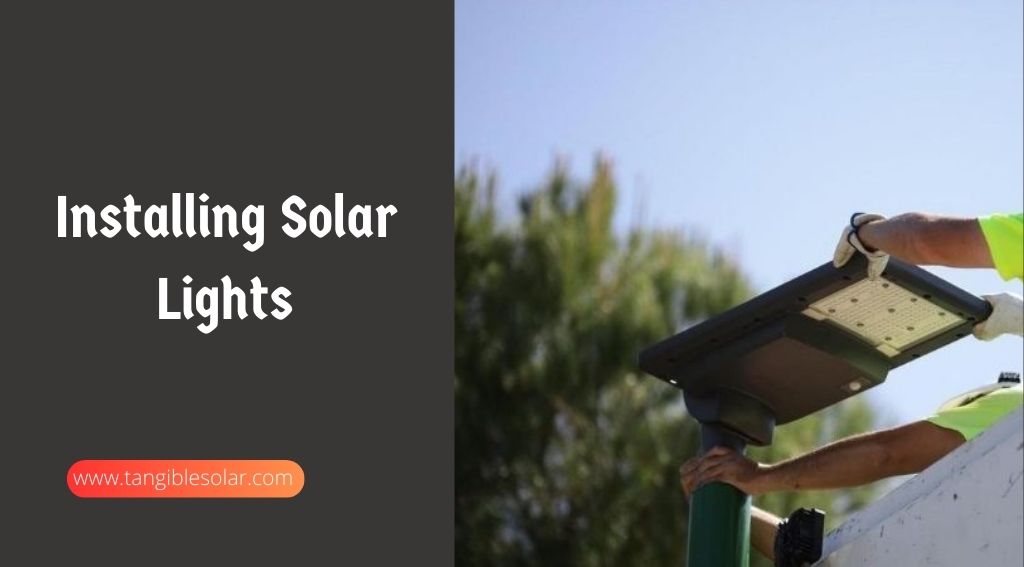
Installing solar lights in your outdoor space can not only enhance the ambiance but also provide eco-friendly lighting without the need for electricity. To ensure maximum efficiency and effectiveness, it’s important to properly prepare, place, and secure. In this article, we will guide you through the process of turning on, starting with preparing the lights for installation.
Preparing The Solar Lights For Installation
Before installing your solar lights, it’s crucial to ensure they are ready for use. Here are a few steps to follow:
- Remove any packaging materials or protective covers.
- Check if the batteries are pre-installed or if you need to insert them into the lights. Refer to the manufacturer’s instructions for specific battery installation steps.
- Make sure the solar panels are clean and free from any dust or debris. Wipe them gently with a clean cloth if necessary.
Once they are prepared, the next step is to determine the proper placement for maximum efficiency.
Proper Placement For Maximum Efficiency
The placement of solar lights plays a vital role in their performance. Here are a few tips for optimal placement:
- Choose a location that receives ample sunlight throughout the day. rely on sunlight to recharge their batteries, so it’s important to avoid shaded areas.
- Position them in a way that allows the solar panels to directly face the sun. This maximizes their exposure and ensures optimal charging.
- Consider placing the lights in strategic locations that require illumination during the evening, such as pathways, driveways, or garden borders.
Now that you know how to position your for maximum efficiency, it’s time to secure them in your outdoor spaces.
Securing Solar Lights In Outdoor Spaces, Ensuring
To prevent your from being easily dislodged or stolen, it’s important to secure them properly. Here are a few methods to consider:
- Use stakes or ground spikes that come with them to anchor them firmly into the ground.
- If they are intended to be mounted on walls or fences, use screws or brackets to secure them firmly.
- Consider installing the lights at a higher elevation to deter theft and vandalism.
By following these steps for securing your you can enjoy their benefits without worrying about durability or theft.
Maintaining And Troubleshooting Solar Lights
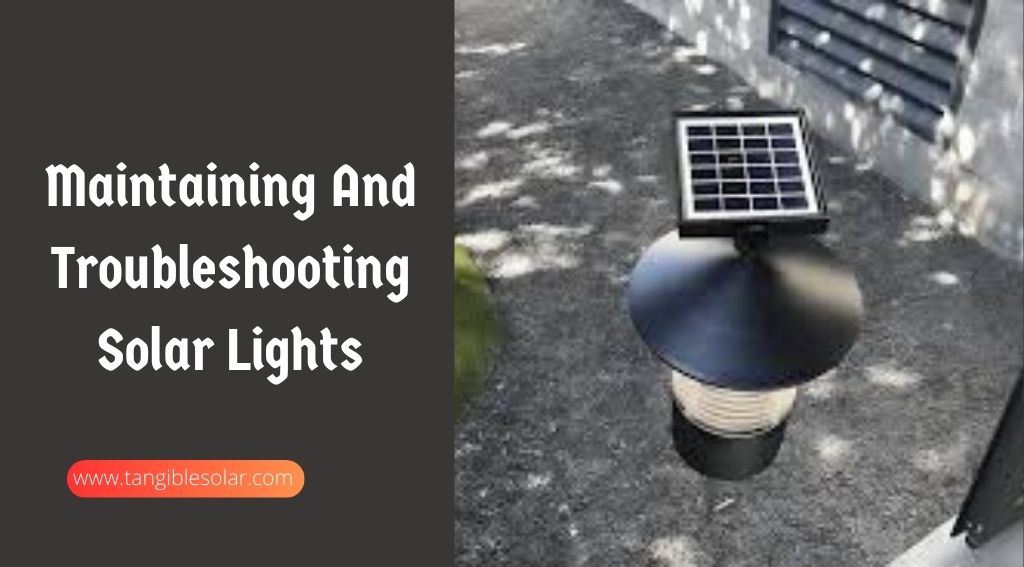
Tips For Maintaining Solar Lights
Maintaining your is essential to ensure they continue to work efficiently and provide illumination for your outdoor spaces. Here are some tips to help you keep your in optimal condition:
- Regularly clean the panels: Over time, dust, dirt, and debris can accumulate on the solar panels, blocking sunlight and reducing their efficiency of. Clean the panels with a soft cloth and a mild soap solution to remove any residue.
- Check the battery life: The battery is an important component as it stores the energy harnessed from the sun. Regularly check the battery life and replace it if necessary. Most have a replaceable battery, which can be easily found at your local hardware store.
- Adjust the solar panel position: Ensure that the solar panel is positioned in a way that it receives maximum sunlight during the day. If your lights are not getting enough sunlight, they may not charge fully and provide adequate illumination at night. Adjust the position of the solar panel to optimize sunlight exposure.
- Inspect the light bulbs: If you are not shining as brightly as before, the light bulbs may need to be replaced. Inspect the bulbs regularly and replace any that are not working properly. LED bulbs are a popular choice due to their energy efficiency and long lifespan.
- Protect yourself from extreme weather conditions. Solar is designed to withstand outdoor elements, but extreme weather conditions like heavy rainfall, snow, or strong winds can damage them. If severe weather is expected, consider temporarily removing the lights or covering them to protect them from potential damage.
Common Problems And Solutions
Even with regular maintenance, solar lights can encounter some common issues. Here are a few problems you may come across and their possible solutions:
| Problem | Solution |
| The solar light doesn’t turn on at night. | See if there are any objects blocking the solar panel. Clean the solar panel to remove any debris. Adjust the solar panel’s position for better sunlight exposure. |
| The solar light stays on for a short period of time. | See if any objects are blocking the solar panel. Clean the solar panel to remove any debris. Adjust the solar panel’s position for better sunlight exposure. |
| The solar light is not as bright as before. | Inspect the light bulbs and replace any that are not working properly. Ensure that the solar panel is clean and free from any residue. Consider replacing the battery with a new one. |
Extending The Lifespan Of Solar Lights
With proper care and maintenance, you can extend the lifespan of your solar lights, allowing them to serve you for years to come. Here are some tips to help prolong the lifespan:
- Regularly clean the solar panels to ensure maximum sunlight absorption.
- Replace the batteries regularly to maintain optimal energy storage.
- Protect the lights from extreme weather conditions by removing or covering them when necessary.
- Store lights indoors if you live in an area with harsh winters or prolonged periods of low sunlight.
- Inspect the lights periodically for any signs of damage or wear, and address them promptly.
- Consider investing in high-quality from reputable manufacturers for better durability and performance.
Enhancing The Illumination Of Your Outdoor Spaces
Your outdoor spaces are an extension of your home, and they deserve to be illuminated in a way that not only enhances their beauty but also provides a functional and safe environment. have become increasingly popular as a sustainable and energy-efficient lighting solution for outdoor areas. If you’re wondering how to turn solar lights on and enhance their illumination, we’ve got you covered. In this article, we’ll explore additional features to improve light performance, using in combination with other lighting options, and creative ways to use in various outdoor spaces.
Why Do My Solar Lights Turn Off At Night
Additional Features To Enhance Solar Light Performance
When it comes to enhancing performance, there are a few additional features that can make a big difference. Here are some key features to consider:
- Adjustable Solar Panel: Look for adjustable panels that can be positioned to receive maximum sunlight exposure throughout the day. This will ensure optimal charging and extended illumination during the night.
- Motion Sensors: equipped with motion sensors are not only convenient but also help to conserve energy. These sensors detect movement and automatically turn on the lights, providing bright illumination whenever someone approaches the area.
- Multiple Lighting Modes: Some offer multiple lighting modes, such as steady-on, dimmed, and flashing. These modes allow you to customize the lighting effect according to your preference and the atmosphere you wish to create in your outdoor spaces.
- Waterproof Design: Outdoor lighting needs to withstand various weather conditions. Choose with a waterproof design, ensuring they can withstand rain, snow, and other elements without compromising performance or safety.
Using Solar Lights In Combination With Other Lighting Options
Solar lights are versatile and can be used in combination with other lighting options to create a layered and visually appealing illumination in your outdoor spaces. Here are some ideas:
- Pathway Lighting: Install along your pathways to guide guests and add a touch of elegance to your landscape. Combine them with low-voltage landscape lighting for a multi-dimensional effect.
- Accent Lighting: Use solar spotlights to highlight specific focal points in your garden, such as trees, sculptures, or architectural elements. Pair them with string lights or uplights for a dramatic and enchanting ambiance during the evenings.
- Security Lighting: Solar floodlights with robust motion sensors are an excellent choice for enhancing security around your property. Combine them with other security lighting options, such as LED floodlights, for comprehensive coverage.
- Outdoor Dining: Create a cozy and intimate atmosphere for your outdoor dining area by incorporating powered lanterns or string lights. Combine them with candlelight or pendant lights to add warmth and charm to your gatherings.
Creative Ways To Use Solar Lights For Different Outdoor Spaces
When it comes to using solar lights creatively, the possibilities are endless. Here are a few innovative ideas for different outdoor spaces:
| Outdoor Space | Idea |
| Patio or Deck | Hang solar-powered lanterns or string lights above your patio or deck to create a cozy and inviting ambiance for entertaining guests. |
| Garden | Place solar-powered rock lights strategically among your plants and flowers to add a magical and whimsical element to your garden at night. |
| Pool Area | Line the perimeter of your pool with solar deck lights or create a mesmerizing and luxurious experience when swimming under the stars. |
| Driveway | Install solar-powered pathway lights along your driveway to ensure visibility and safety for vehicles and pedestrians. |
By utilizing these creative ideas, you can transform your outdoor spaces into captivating and well-illuminated areas that serve both practical and aesthetic purposes.
Frequently Asked Questions Of How To Turn Solar Lights On
How Do Solar Lights Work?
Solar lights contain that sunlight during the day, converting it into electricity. This electricity is stored in a built-in battery. At night, the battery powers the LED lights, providing illumination without the need for any external power source or wiring.
Where Should I Place My Solar Lights?
To maximize their efficiency, place solar lights in areas that receive direct sunlight for at least 6-8 hours a day. Avoid shading from trees or buildings. Ideal locations include pathways, driveways, gardens, and patios.
How Do I Turn Solar Lights On?
Most solar lights have an On/Off switch located on the underside or top of the light fixture. Simply switch it to the “On” position. Some lights may also have a built-in light sensor that automatically turns them on at dusk and off at dawn.
How Long Do Solar Lights Stay On?
The duration of solar lights’ illumination depends on factors such as the amount of sunlight received during the day and the capacity of the battery. On average, can remain illuminated for 6-8 hours when fully charged.
Conclusion
To wrap it up, turning on solar lights is a simple yet effective way to illuminate your outdoor spaces while reducing your carbon footprint. By following these steps, you can ensure that your lights work optimally and provide sufficient lighting throughout the night.
Remember to keep the panels clean and positioned to receive maximum sunlight. With the right care and attention, will continue to brighten up your evenings for years to come.

